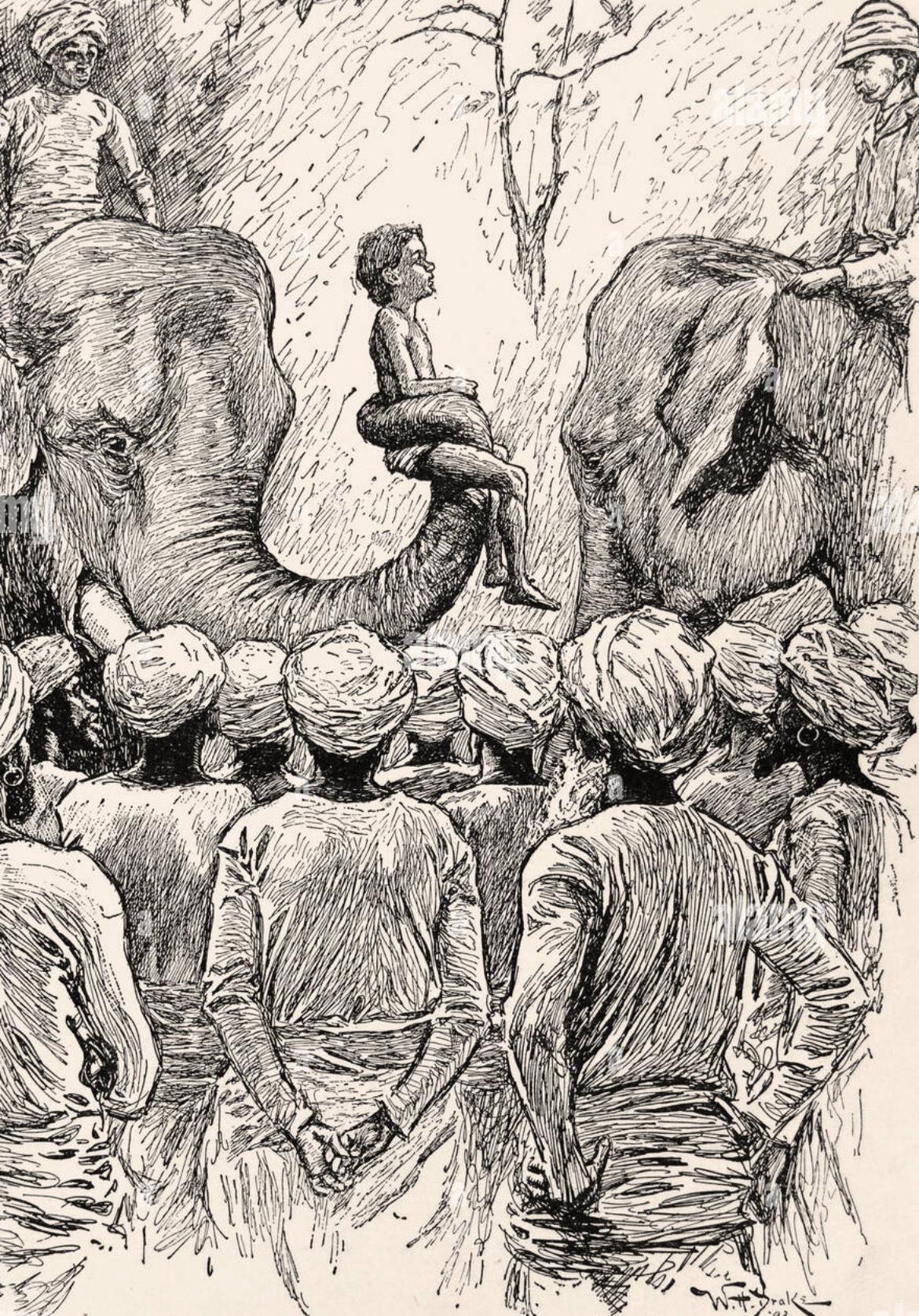Created by Katherine Manaresi on Mon, 10/14/2024 - 21:33
Description:
Rudyard Kipling’s novel, The Jungle Book, is a collection of stories published in 1894, that personify a variety of jungle animals– Shere Khan the tiger, Baloo the bear, and a boy or “man-cub” named Mowgli who is raised by wolves in Seeonee, India. At the time, the British controlled a large portion of India through the East India Company, which eventually turned into a direct ruling called the British Raj in the mid to late 19th century. This caused great tensions between the native people of India and the British colonizers, bringing about stereotypes of savagery and disobedience. It is thought that Kipling’s novel somewhat reflects these intricacies, masking the impositions of British imperialism on the native people within an easier to read, fictitious story. Throughout, the story flows with a prominent theme of abandonment followed by fostering: thought to echo Kipling’s own childhood. Rudyard was born in India and raised there for his early years. He was later sent to live with a foster family in England throughout the 1870s prior to attending boarding school. Thus, he lived both sizes: that of the conlonizer and of the colonized. While the novel is less about the Darwinian struggle to survive that is typically found in person-creature relationship stories, it instead highlights both serious and silly human mannerisms in animal form. This is where the story takes a bit of a turn for the didactic tradition. Kipling uses these animal leaders of the forest to teach Mowgli, and in turn the reader, the importance of respecting authority, obedience and knowing your place in society or rather in the jungle, as he moves through his quest for belonging and concrete identity.
Copyright:
Associated Place(s)
Artist:
- Katherine Manaresi


